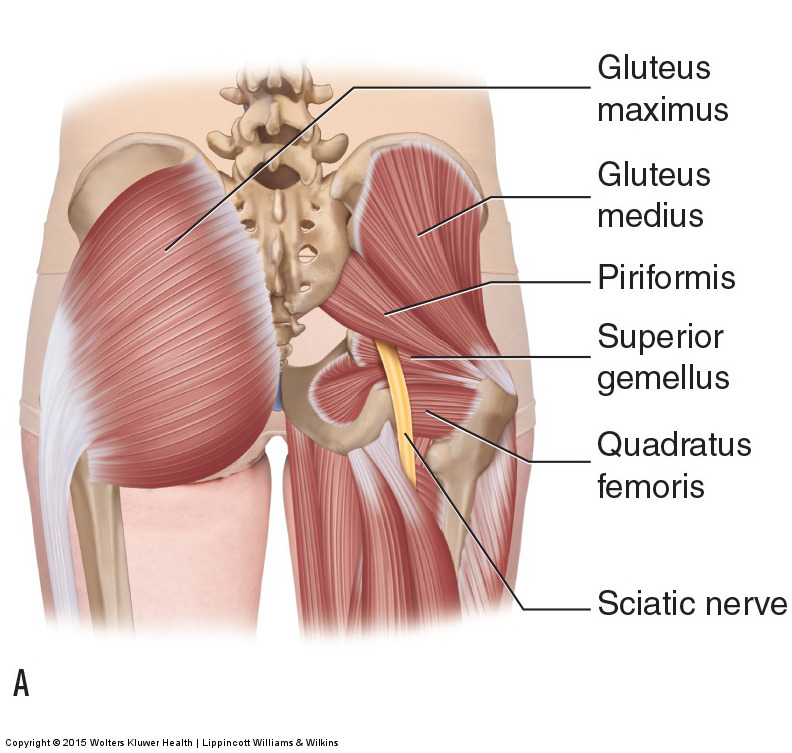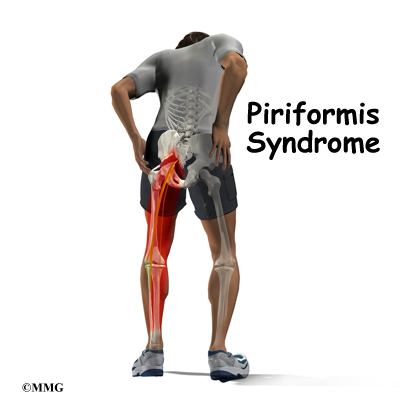PIRIFORMIS SYNDROME
Piroformis syndrome is quite common in running, especially among runners who run in the mountains or in a hilly environment.
In this article you will get som info about it, and also some tips and advices how to prevent it, and how to stretch and reduce the stiffness.
ABOUT PIRIFORMIS MUSCLE
The piriformis muscle is a small muscle located deep in the buttock (behind the gluteus maximus).

The piriformis muscle:
- Starts at the lower spine and connects to the upper surface of each femur (thighbone)
- Functions to assist in rotating the hip and turning the leg and foot outward
- Runs diagonally, with the sciatic nerve running vertically directly beneath it (although in some people the nerve can run through the muscle).
Piriformis syndrome is a condition in which the piriformis muscle, located in the buttock region, spasms and causes buttock pain. The piriformis muscle can also irritate the nearby sciatic nerve and cause pain, numbness and tingling along the back of the leg and into the foot (similar to sciatic pain).Symptoms of piriformis syndrome often become worse after prolonged sitting, walking or running, and may feel better after lying down on the back.

Advices/Suggestions:
Since piriformis syndrome is usually caused by sports or movement that repeatedly stresses the piriformis muscle, such as running or lunging, prevention is often related to good form. Avoid running or exercising on hills or uneven surfaces. Warm up properly before activity and increase intensity gradually. Use good posture while running, walking, or exercising.
Piriformis stretches
There are a number of ways to stretch one’s piriformis muscle. Two simple ways include:
- Lie on the back with both feet flat on the floor and both knees bent. Pull the right knee up to the chest, grasp the knee with the left hand and pull it towards the left shoulder and hold the stretch. Repeat for each side.
- Lie on the back with both feet flat on the floor and both knees bent. Rest the ankle of the right leg over the knee of the left leg. Pull the left thigh toward the chest and hold the stretch. Repeat for each side.
Each piriformis stretch should be held for 5 seconds to start, and gradually increased to hold for 30 seconds, and repeated three times each day.
Hamstring stretches
Stretching the hamstrings (the large muscle along the back of each thigh) is important to alleviate any type of sciatic pain.

Here is video with stretchings…
Actions:
– It would help you to visit a physio.A physical therapist, physiatrist, chiropractor or other qualified health practitioner can develop a customized program of stretching and range of motion exercises to help stretch the muscle and decrease spasm.
-Deep massage therapy (manual release) by a qualified specialist is thought to enhance healing by increasing blood flow to the area and decreasing muscle spasm.
-Ice therapy
-It may be more helpful to combine a gentle massage with the ice.

Get Support for Your Training
With Arduua Online Coaching, you’ll receive personalized coaching tailored to Trail running Our expert coaches are here to guide you in reaching your full potential and achieving your goals.
If you have any questions, please feel free to reach out to Katinka Nyberg at katinka.nyberg@arduua.com.
Best of luck with your training!
/Arduua Team


